In this final part of our 2019 Heading West series, I take you along on our last three stops before heading home after 3 weeks. It all started in the Wind River Range of Wyoming and you can read Part I here, Part II here, Part III here and Part IV here.
Recognize this face?
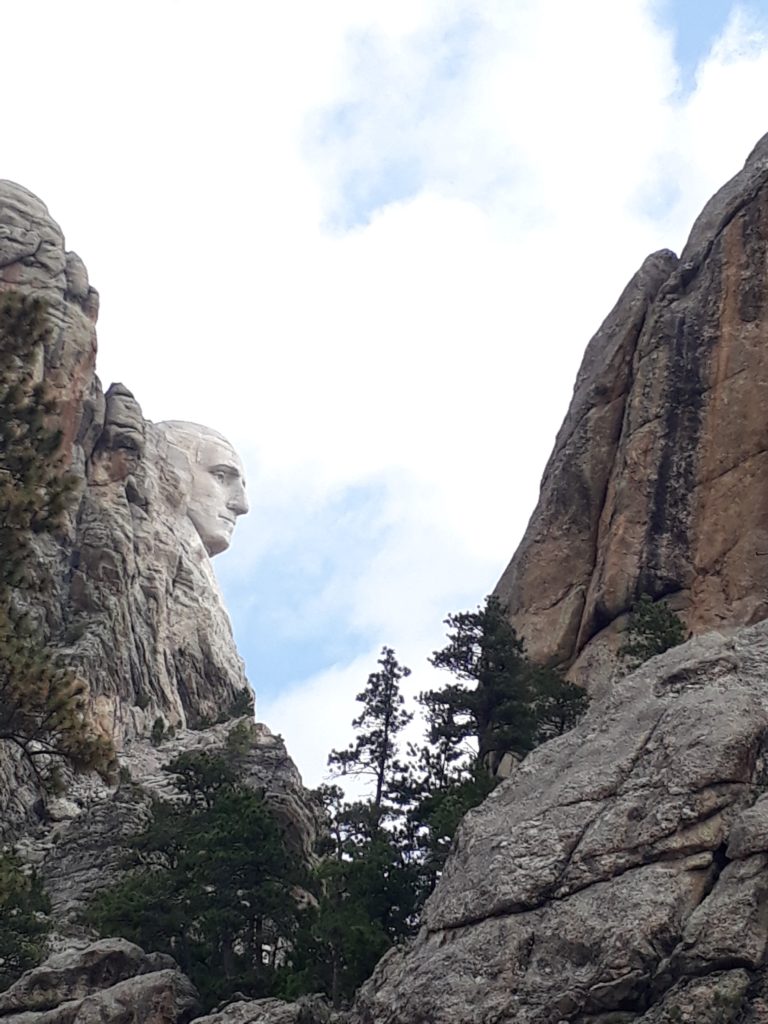
I mentioned before that my youngest two children, now adults, had never seen Yellowstone National Park before this trip. They also had never seen Mount Rushmore in South Dakota, so we made a point to stop by. It was an overcast day but it didn’t dampen the amazing sight of Borglum’s artistry.
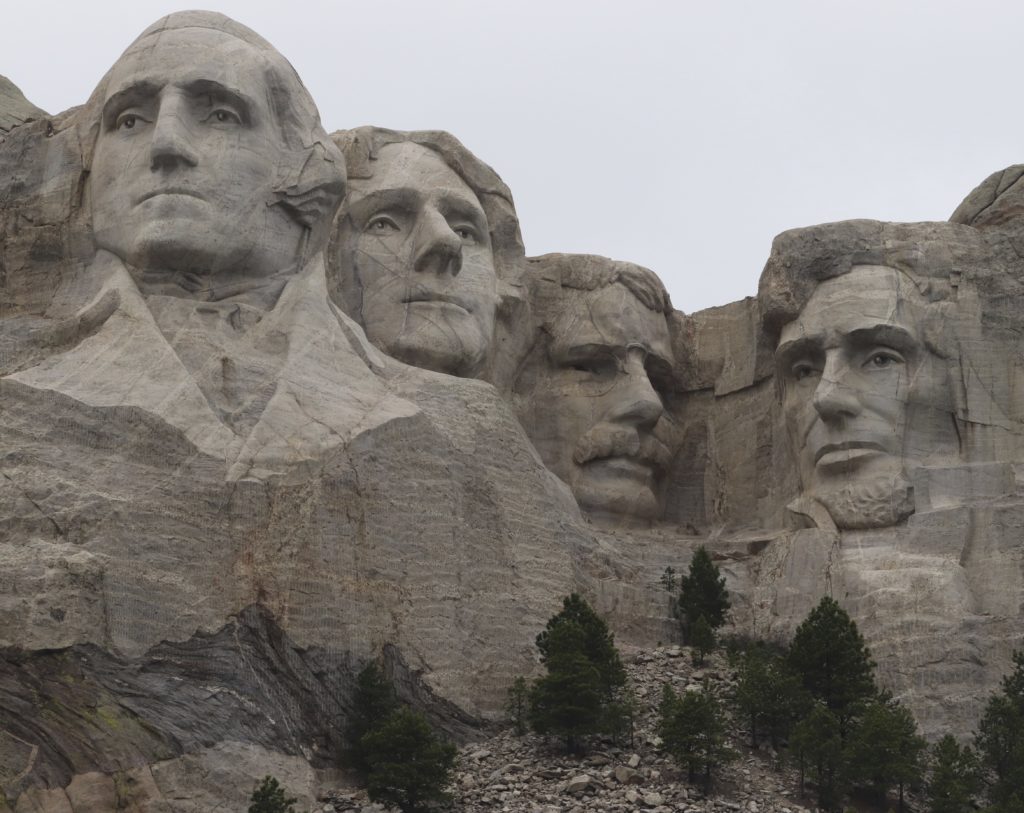
Gutzon Borglum chose this mountain due to its height (5700′ above sea level), the soft grainy consistency of the granite, and the fact that it catches the sun for the greatest part of the day. Did you know the original plan was to carve these four Presidents in detail to the waist? Borglum died in 1941 and his son ran out of funding to complete the project.
:max_bytes(150000):strip_icc()/Gutzon_Borglums_model_of_Mt._Rushmore_memorial-5c4caf6fc9e77c00016f3483.jpg)
Above is an early photo of the model Borglum made prior to the actual stone carving on the mountain.
Borglum chose these 4 Presidents for what they represent: Washington for the founding of American democracy, Jefferson for the Declaration of Independence and expansion of the nation, Roosevelt for the industrial age and conservation and Lincoln for the preservation of our nation.
Close ups reveal secrets
It’s so interesting to look closely at the faces. Washington’s eyes are cavities with the pupils left uncarved. Ole George has worn pretty well for nearly a hundred years.
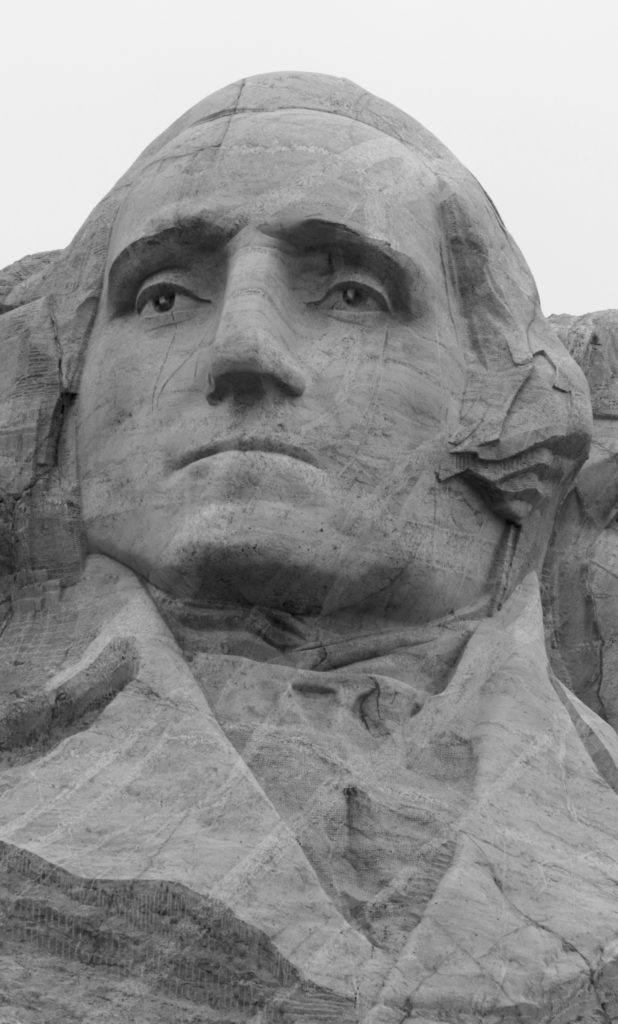
Abe, on the other hand, has had a few cracks develop. A substance devised by Gutzon Borglum that was a mixture of linseed oil, white lead, and granite dust, was found to have dried out quickly and became ineffective at keeping water out of the cracks. The National Park Service staff began removing the old sealant and replacing it with a modern silicone sealant. Modern sealants are better able to withstand the extreme temperature and moisture variations that occur on Mount Rushmore. Similar to what Borglum had done, the silicone is camouflaged after it is applied by sprinkling granite dust on its surface.
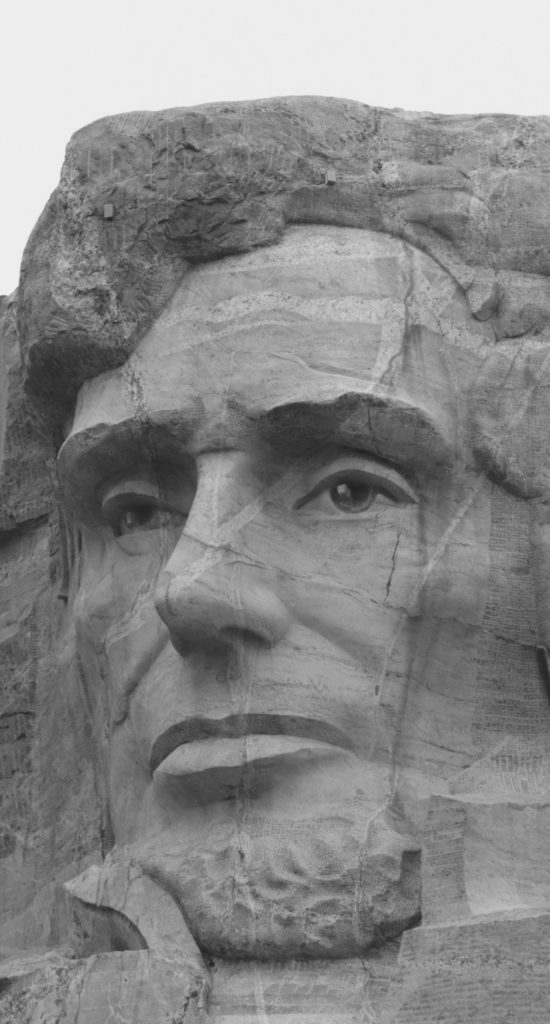
A monitoring system was installed in 1998. Electronic instruments capable of measuring even slight movement in three dimensions were placed along some of the major fractures. The instruments also record the temperature of the air and the rock surface. Measurements are recorded four times a day and relayed to a central computer. In recent years, no movement in the Rushmore facade has been detected. I wonder if those little boxes on Abe’s hair in the photo above are part of the monitoring system.
The Spirit of the Native American
We also visited the Crazy Horse Monument, less than 15 miles from Mount Rushmore. It was commissioned in 1939 by Henry Standing Bear, a Lakota elder and started in June 1948 by sculptor Korczak Ziolkowski. Below is the model of the proposed carved figure. It represents the spirit of Chief Crazy Horse, since there are no known photographs or likenesses of him in existence.
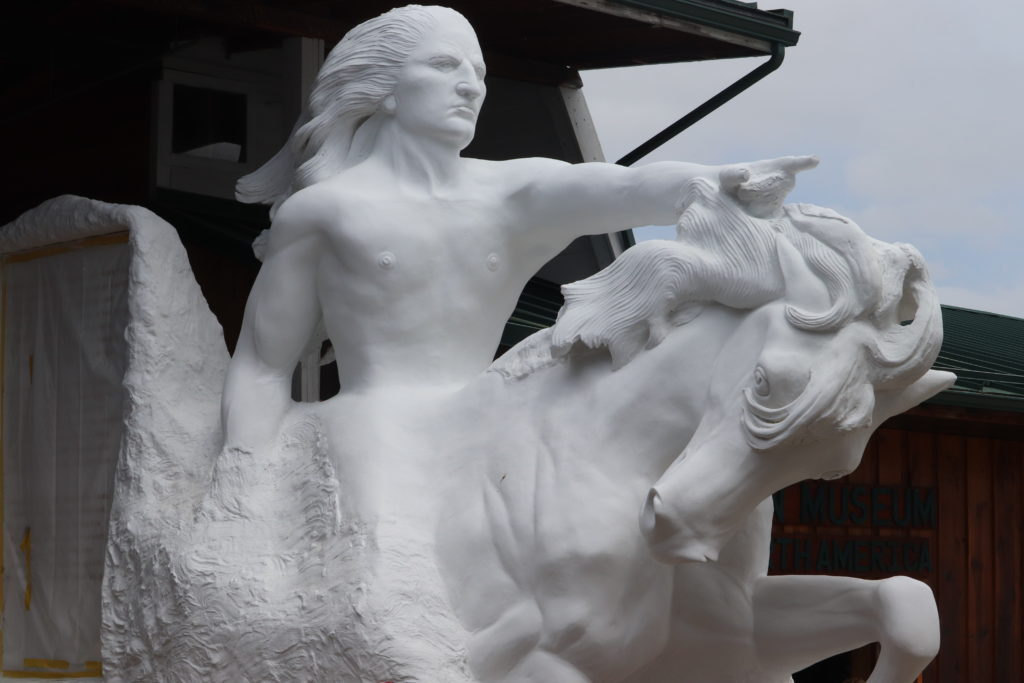
Korczak Ziolkowski worked alone or with little staff for 34 years on the Crazy Horse Monument until his death in 1982. His widow continued operations until she passed in 2014 and it is the intention that some of their 10 children will finish the work.
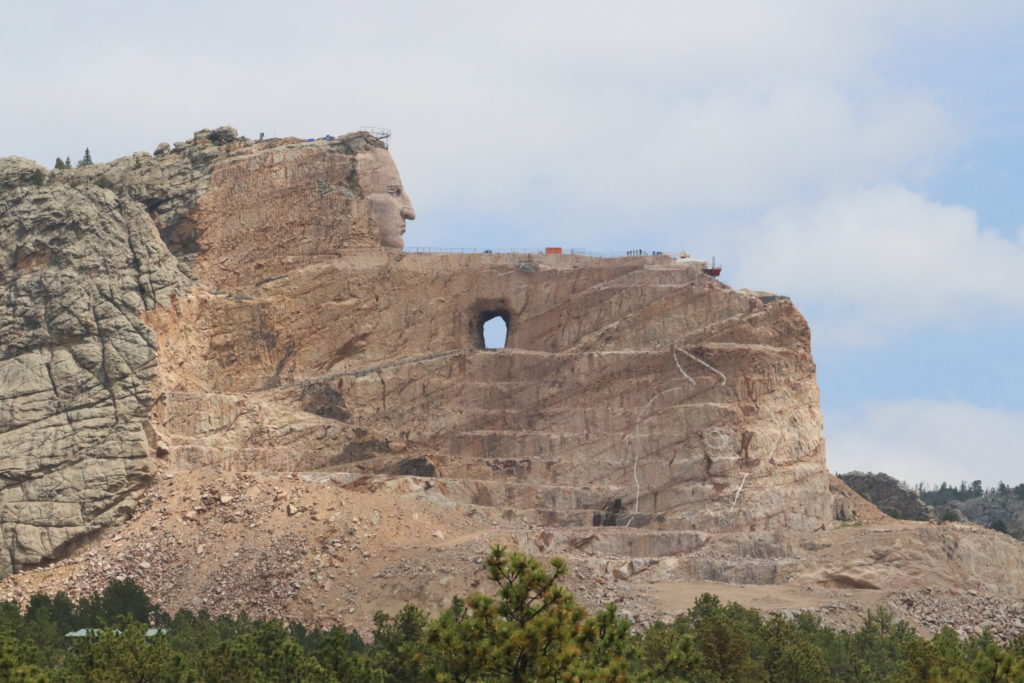
The Ziolkowski descendants and the Crazy Horse Memorial Foundation cite financing, weather and engineering challenges as reasons that a completion date cannot be set. However, at $30 per vehicle and 1.2 million people visiting the site each year, the non-profit foundation should have some funding in the coffers. There is also opposition to the Memorial from within the Lakota tribe, so it faces many challenges as it tries to complete Standing Bear’s vision.
The small museum associated with the Crazy Horse Monument was interesting and I enjoyed the old photos.
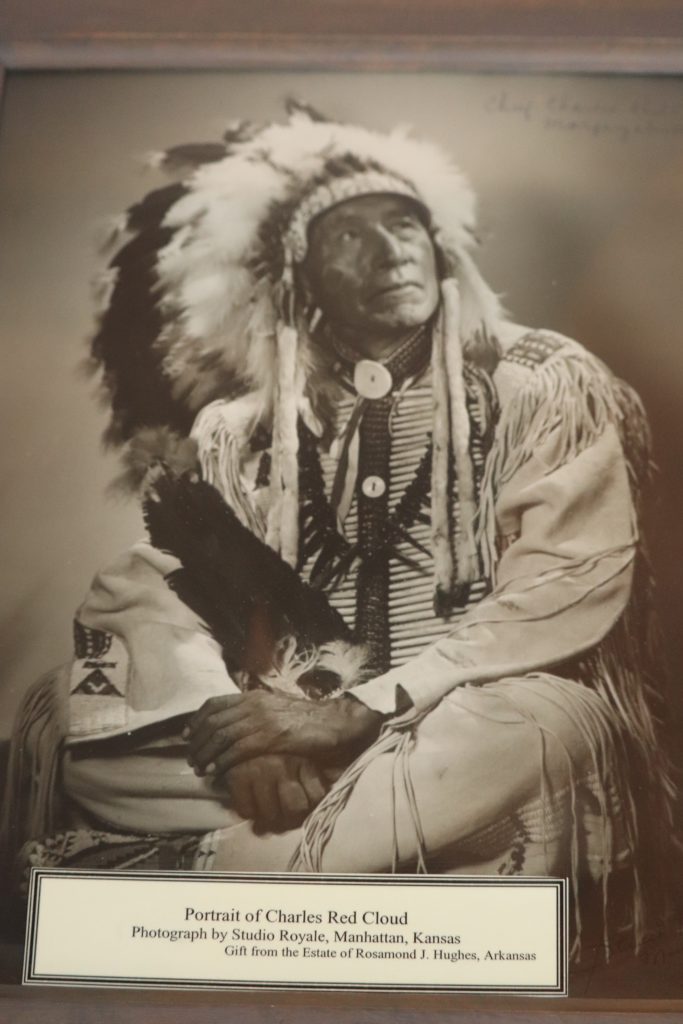
Below is a beaded buckskin dress of a Cheyenne woman circa 1890. So pretty.
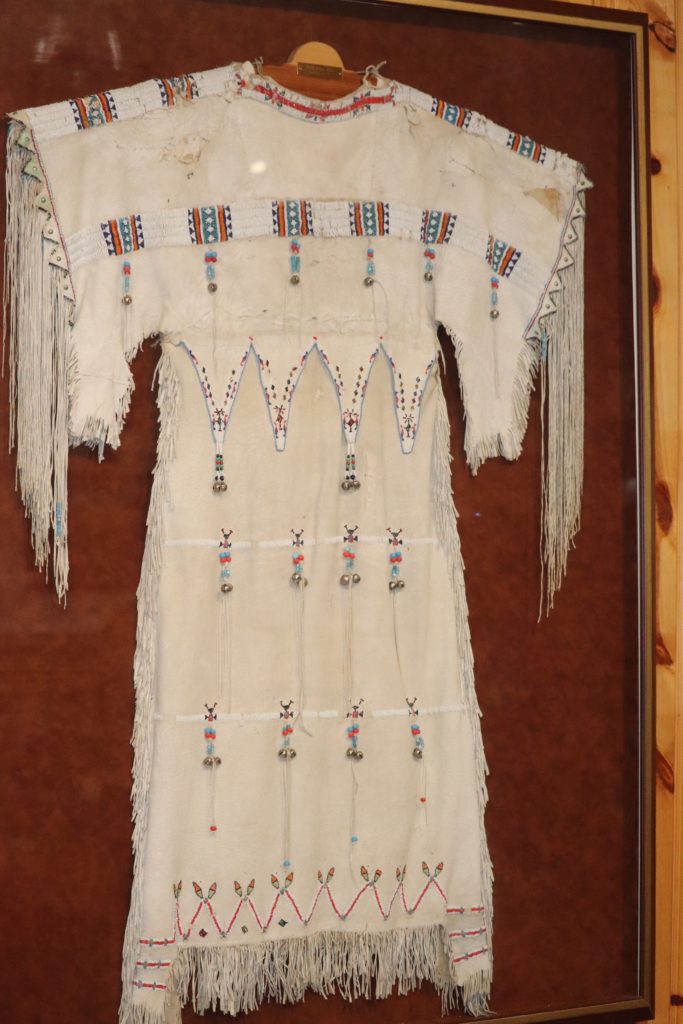
A New Find
We noticed on the road atlas that the Herbert Hoover Presidential Library, Museum and Birthplace were literally 1/4 mile off the interstate in Iowa. Since most of the gang was in favor of a break, we pulled off the freeway and hoped it was worth the stop. Boy, was it!
The Presidential Library is a beautiful limestone building.
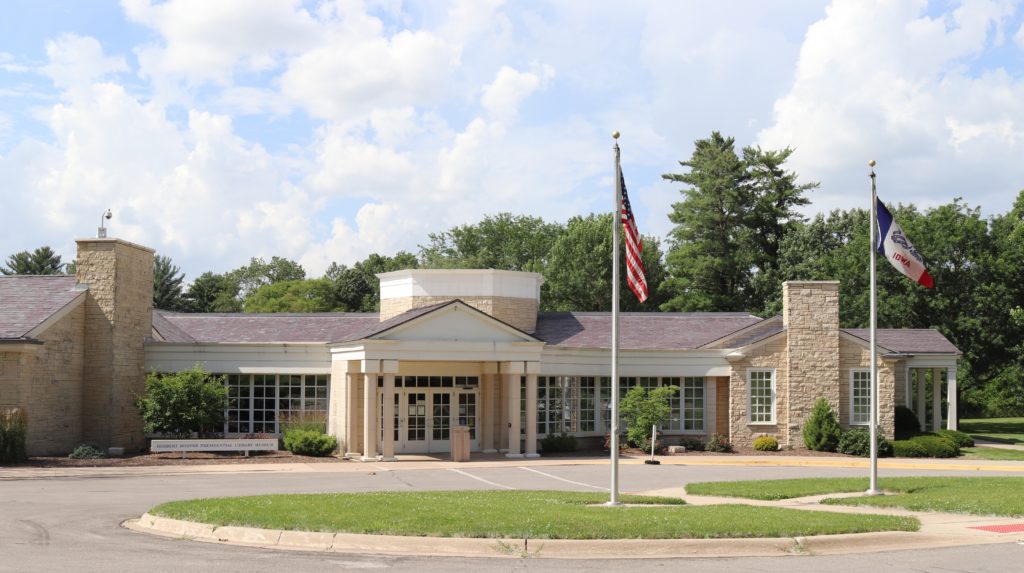
The grounds were beautiful and immaculate, operated by the National Park Service. A stream meandered by with large old oaks dotted around the property. The quaint town of West Branch was just a block away and a farmer’s market happened to open on a neighboring street. It was a refreshing atmosphere for road-weary travelers!
Herbert Hoover was born in 1874 in the little house below, built by his father Jesse. The cottage has never moved from its original site. It has just two rooms: a kitchen/sitting area in one room, another containing the 2 beds for parents & 3 children. The Hoovers were Quakers and Hulda, Herbert’s mother, was a Quaker minister. Herbert’s father ran the local livery but died from a heart condition when Herbert was only 6. Too quickly, Herbert’s mother also died at age 35 from typhoid when Herbert was 9.
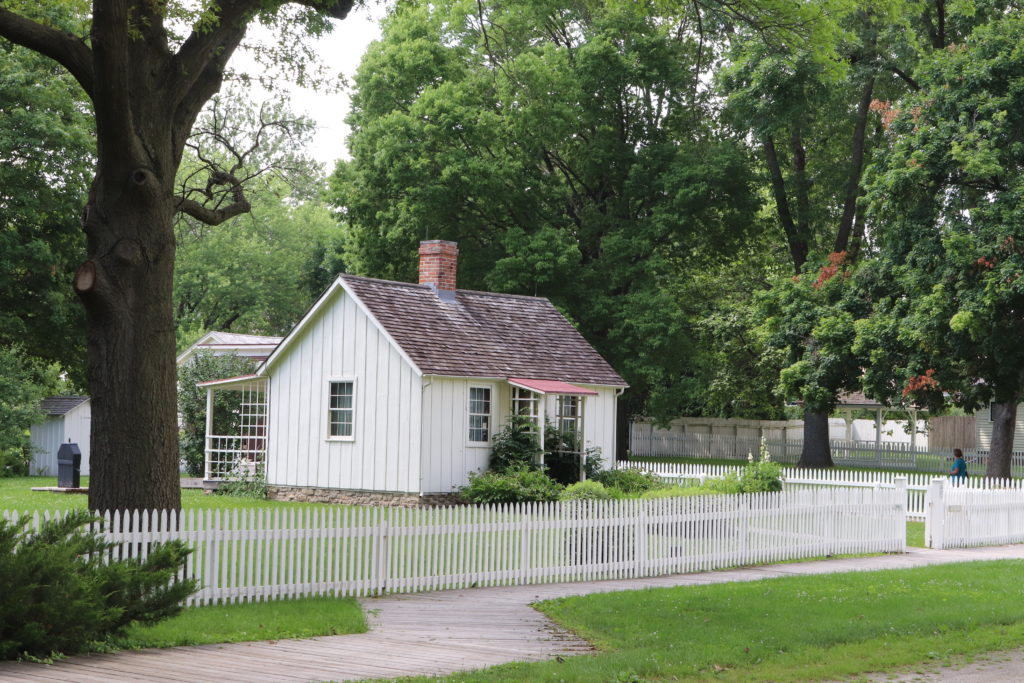
Below is the Quaker Meeting House, women on one side with their own door, and men on the other. There was also a baby “cry room” annex off to the side.
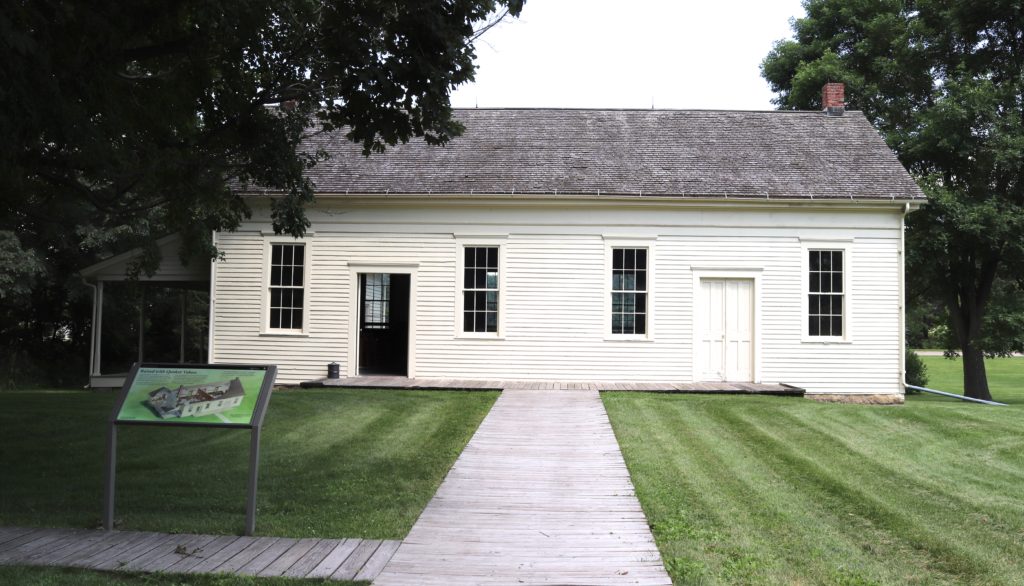
Even though his time was short in West Branch, Iowa, the impact was lifelong. Below explains what his childhood was like.
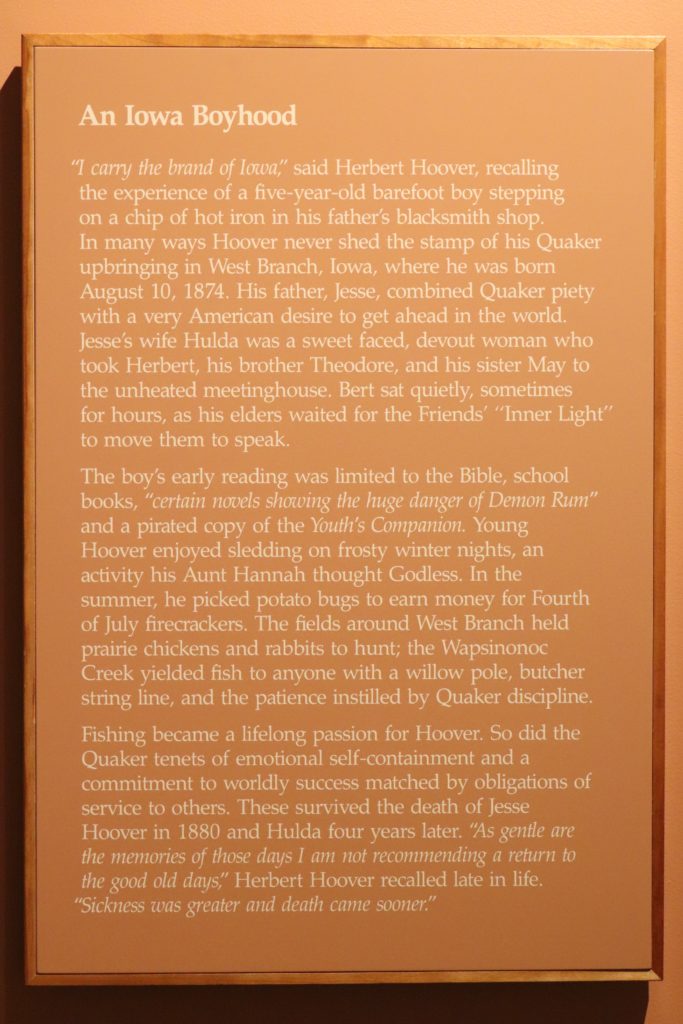
Herbert lived with an aunt and uncle in Oregon after his parents died and then went to Stanford University majoring in mine engineering. After graduating he worked in Australia in the mining business and later in London.
Orphan to President
His Quaker upbringing instilled in him the desire to help others. He took a position at the outbreak of WWI as head of the Commission for Relief in Belgium, an international relief organization that provided food to occupied Belgium. That led to President Wilson appointing Hoover to lead the Food Administration and soon after the war, leading the American Relief Administration,which provided food to the inhabitants of Central Europe and Eastern Europe. Below is a photo of Hoover and his wife working in that effort.
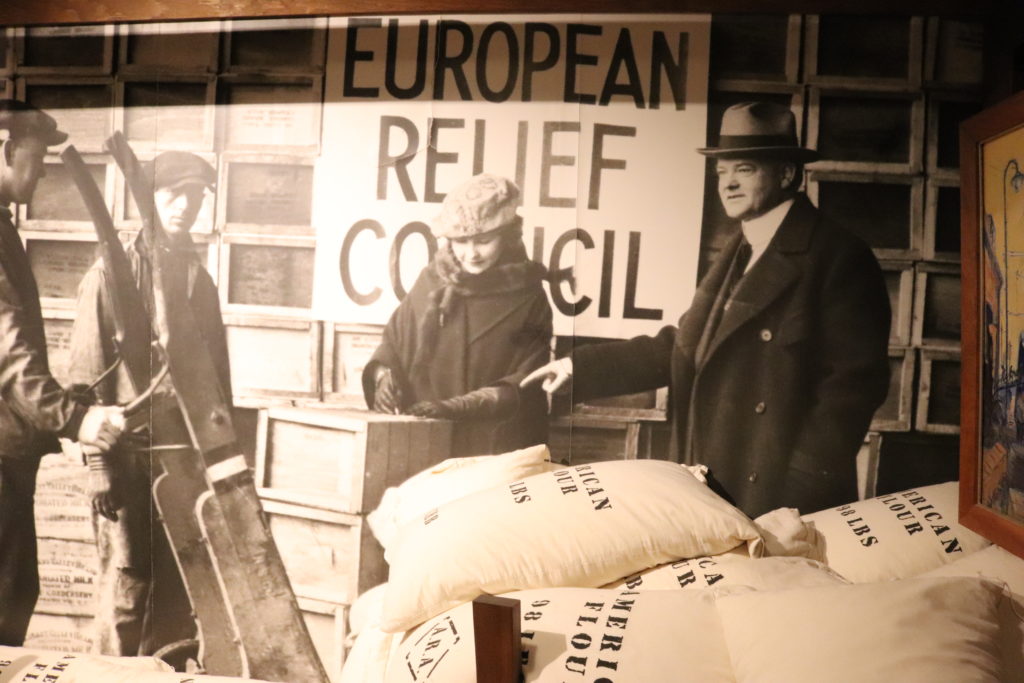
President Harding appointed Hoover as Secretary of Commerce in 1920 and he continued to serve in that role under President Coolidge after Harding died in 1923. He was an unusually active and influential cabinet member, which ultimately led to his election as President in 1929.
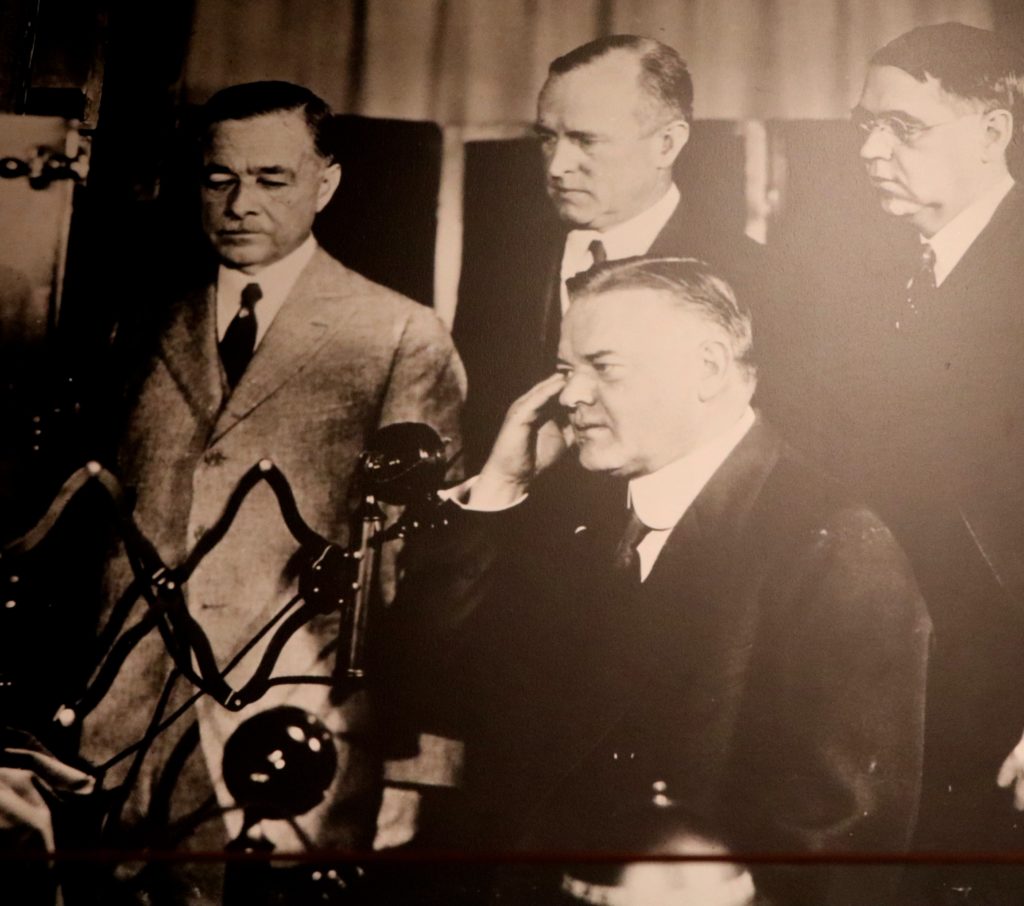
Hoover was blamed for the Stock Market Crash in 1929, though he had only been in office 7 months. His future Presidential opponent, FDR, led a very effective smear campaign against Hoover in 1932. Hoover never regained his former popularity. Consequently, he only served one term as President.
Hoover remained politically active after the Presidency, but one of his loves in retirement was fishing, which he had done as a boy in West Branch, Iowa.
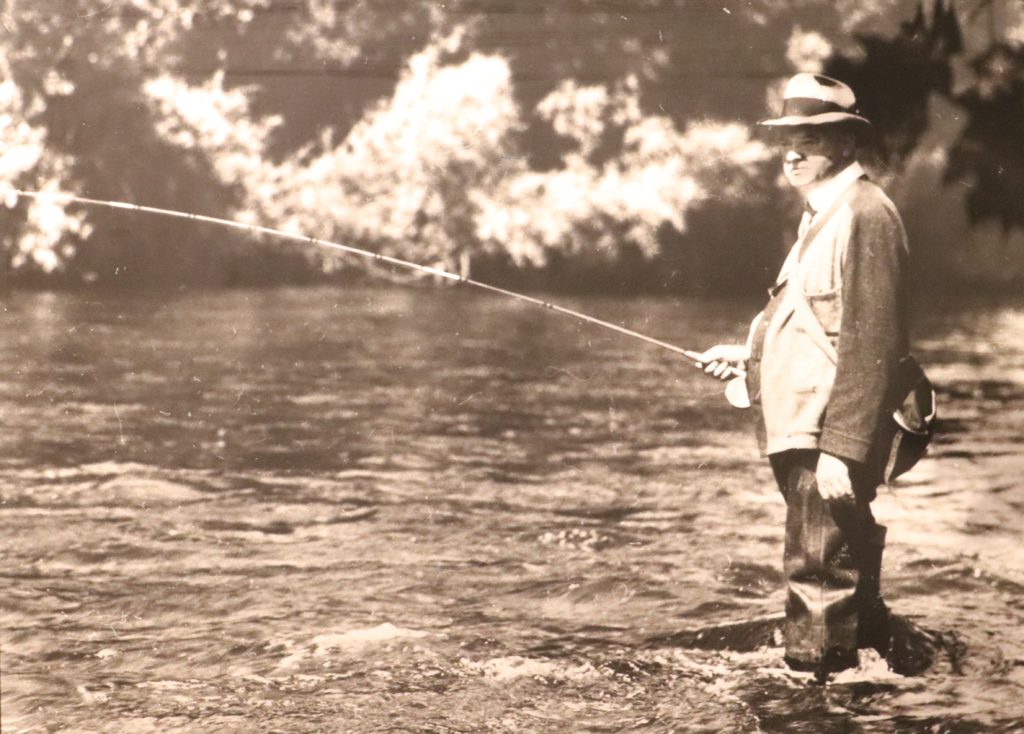
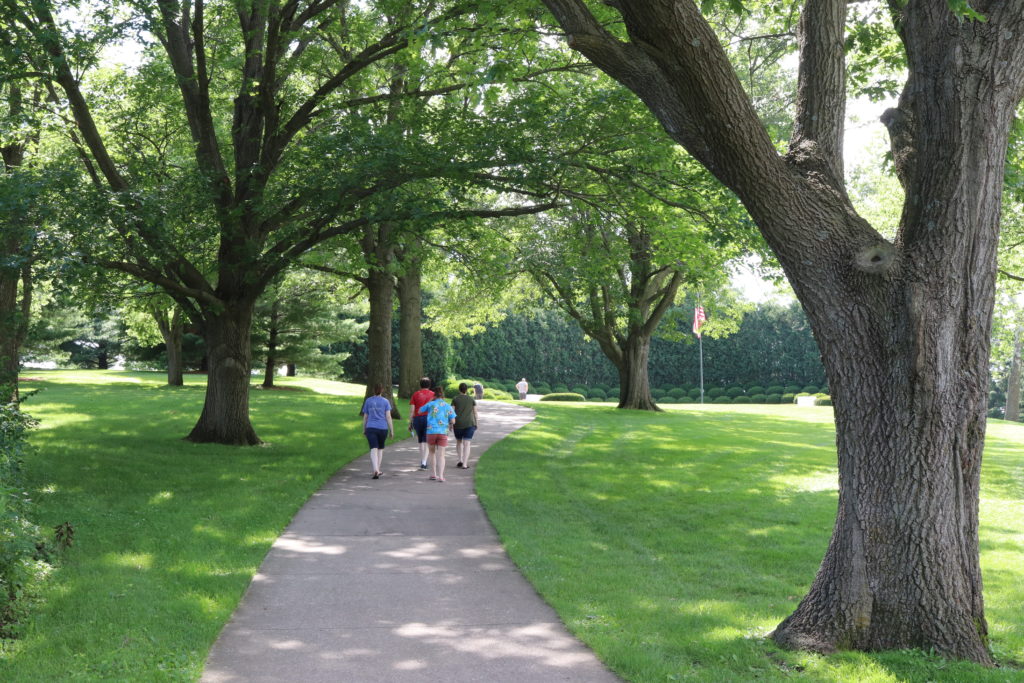
He died on October 20, 1964 at the age of 90, only the 2nd US President at that time to reach 90, joining John Adams. He also had been in retirement the longest, 31 years, which Jimmy Carter has now surpassed.
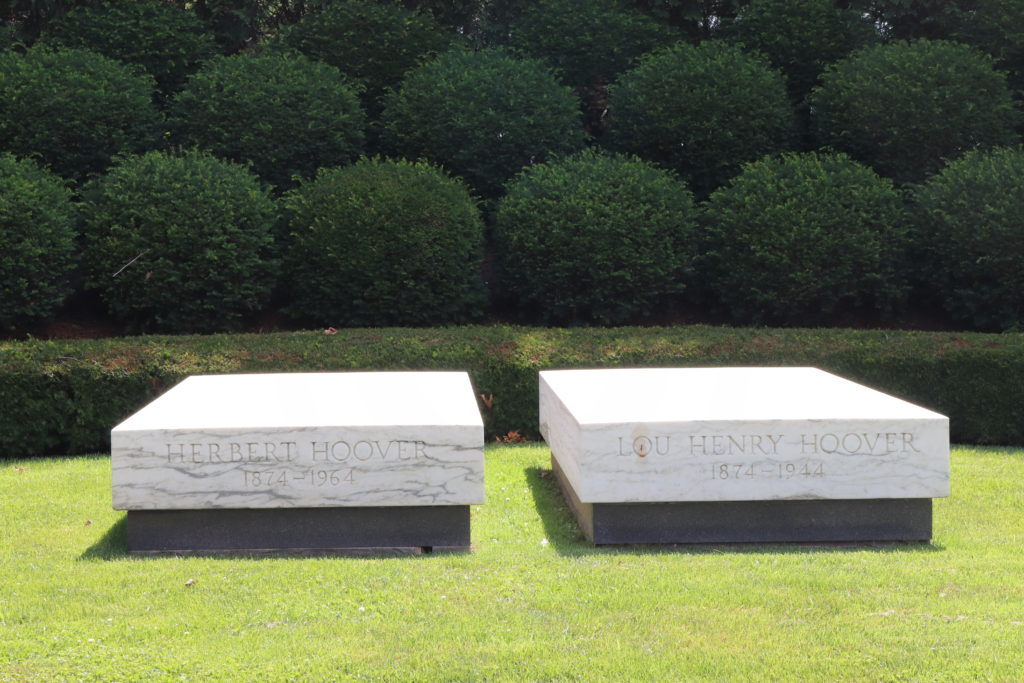
Here are the humble and simple grave sites of Herbert Hoover and his wife, Lou Henry. Herbert chose this site on top of a small rise above the town of West Branch because there is a beautiful, unobstructed view down to the cottage where he was born.
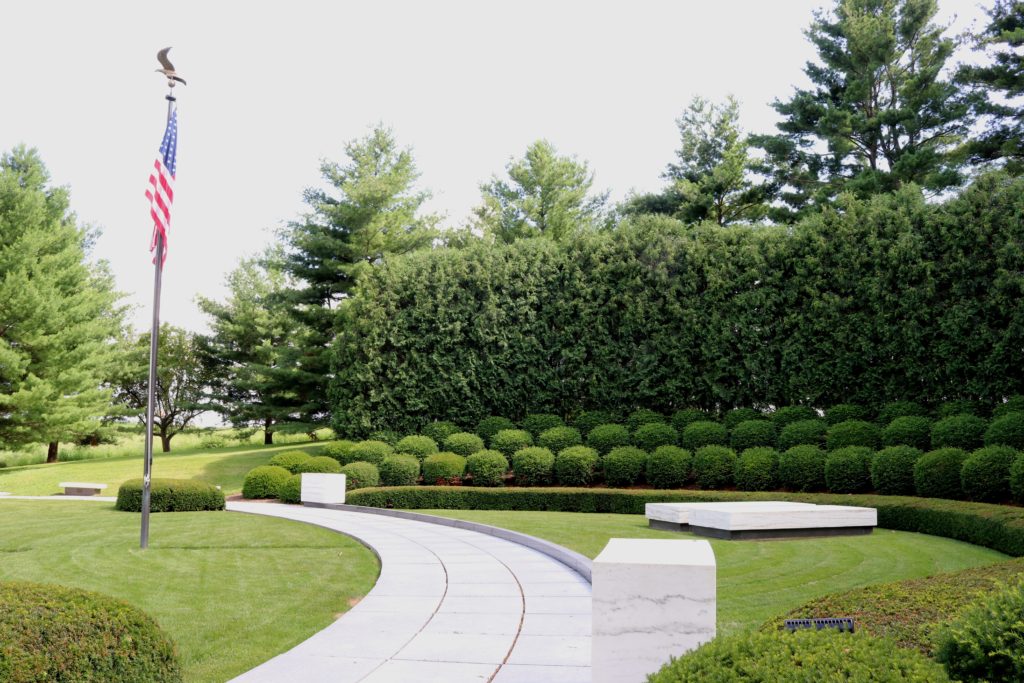
Hoover’s Library was the first Presidential Library built. There are 13 in existence now, with 2 more to be built (Obama’s and Trump’s). If you travel on I-80 through Iowa, be sure to stop at the unpretentious town of West Branch and see this tribute to one of our lesser-remembered and under-appreciated presidents. I learned quite a bit about Hoover and the park-like setting gave us a nice break from the long hours on the road.
This concludes the 5-Part series of our 2019 trip Heading West. Not sure what is coming next on the blog but then that’s the adventure, isn’t it?
Catch y’all next time,
Carolyn
You did such a great job documenting our whole vacation! I really loved looking at the pictures you took of Mt. Rushmore. It is so cool to see the monument up close like that! I have never seen the cracks on Lincoln before and I did not know that they had to fill them. And I think you are right about those boxes being the recording instruments. That is so cool! I have really enjoyed looking at all the pictures you have taken and reading about the history that goes with them. Great job!
Carolyn, Wonderful job. We always enjoyed putting history and nature together on our trips. You taught me a lot about Hoover and Mt. Rushmore.